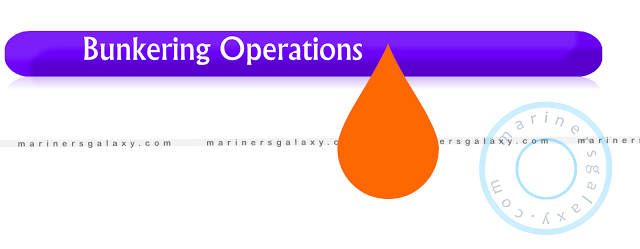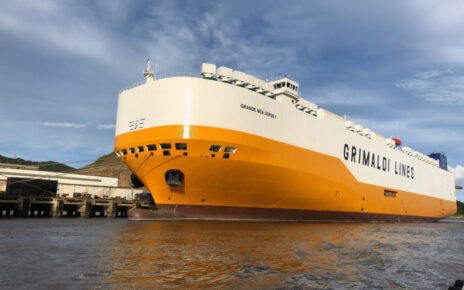

In this article we will study about the process of bunkering (Oil for Ship). Bunkering is referred to as taking of oil or bunkers on board ship. Ship fuel consumption is very high and this makes us to take oil once in a month. But due to importance of this process both in terms of bunkers prices and environment, this is given an utmost priority. Any oil spill during this process will lead to serious fines on the ship and ship may be detained also. Let’s discuss more on this topic and I will cover various aspects of Bunkering.
It is defined as taking fuel oil on board ship. Oils can be of many types like lube oil, heavy oil, Low Sulphur heavy oil and Diesel oil. Lube oil sometimes is brought in drums and then we will not say that we have received bunkers. Anything (Especially oil) that is pumped on ship comes under the bunkering.
When the master of the ship sends reports regarding taking of bunker, there are some specification oil the needs to be understand. First of all the viscosity of the oil plays an important role. Generally Viscosity is measured in three terms namely: Redwood viscosity, CST (centistokes) and Engler. Normally we take fuel oils having viscosity of around 380 CST. Now the specific gravity of the oil which we have to take is around .99 at the temperature of 15 degree Celsius. The sulphur content in the oil needs to be less than 3.5 percent.
Chief Engineer or any other responsible officer will call a meeting and will explain every person his or her duties during this operation. It is carried out in the manner so that last minutes hassle of what every person has to do is finished. Safety checks are told to every person who is involved in this process. For example if any oil spillage occurs during the operation, what responsibility every member on board ship would have.
Sounding of oil tanks are taken before this whole routine and tanks are indentified in which we have to take the bunkers. One thing which needs to be taken care is that, only 85% of all tanks are taken under bunker. Some space is always left behind as bunker is in heated form and expands a little.
Do check that the flange of pipes coming from the barge that is supplying the fuel and the line that goes to the ship is securely tight and is of correct size. Keep ready the oil spill fighting equipments like husk, wildon pump etc to prevent any oil pollution happening when there is a spillage form pipe lines. All scuppers are blocked and SOPEP kit is kept ready. To indicate that bunkering operations are going on, a red light or a flag on mast is always shown. The tightness and slackness of securing lines needs to be taken care off. Timing of starting of bunker and end time, needs to be written in the log book.
There are three rates at which we let the oil flow through the pips namely: Initial rates, normal rates and topping rates. Different rates are needed because initially we cannot pump fuel at high pressure. There are always two ways of communication on ship and if one goes bad, other is always there for having communication between the barge and ship. If somehow the pipe lines burst, then we can quickly tell the barge fellow to stop pumping the oil. For this reason the oil pipe lines are checked every 6 months for their suitability for pumping the oil and this is a mandatory procedure to be carried out on ship. Extra Caution needs to be taken when final topping up of fuel tanks is being done.
It may happen that the party who is supplying oil may give you oil which is not good for the engine. Yes documents are always there but still samples are taken from barges oil and are sent to the laboratory for checking. Until then the oil is not used for main engine. This is a very fast process and will take only few days to come. But in some ship the sampling of oil is done onboard ship only. There are separate instruments also that are used to collect the sample from the pipe that is giving oils to the fuel tanks.



u should give the detail in points and for each operational procedure and precautions
i need some help,
can you explain about on shore ship operations?
Regarding the operations when a ship comes near the port, plenty needs to be done from the shore- providing fuel, bunkering, de-bunkering, arranging ship supplies, fresh water supplies and even crew transfers between the ship and the port. All of these services should be kept in mind and arranged in advance. For ships coming to Sri Lanka, I can recommend the experienced Lanka Maritime Services and even in other locations, it would be most practical to look for a provider that can do everything at once.